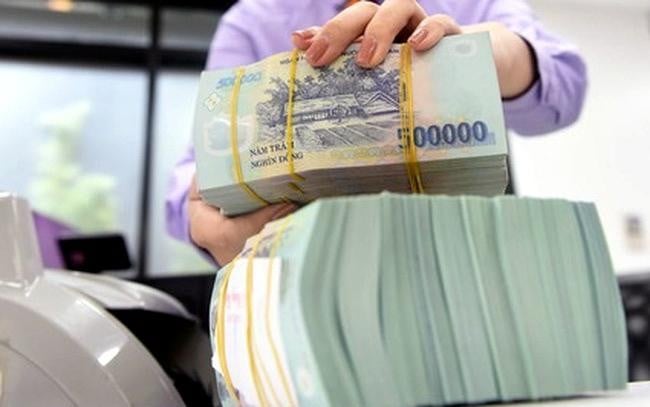Bad debt is becoming a difficult problem for many banks in the context of economic difficulties and complex natural disasters. With the increasing bad debt ratio, banks are under pressure to increase provisions, while facing difficulties in recovering collateral.
Bad debt pressure increases
The bad debt ratio of many banks has shown signs of increasing in the first months of 2024, creating great pressure on credit institutions in managing and handling ineffective debts.
According to the financial reports of 29 banks in the first half of 2024, up to 24/29 banks recorded an increase in bad debt ratio, reaching nearly VND 242,000 billion at the end of June 2024, an increase of nearly VND 45,000 billion (22%) compared to the end of 2023. Notably, the absolute bad debt balance increased by more than 20% compared to the end of last year, raising concerns about banks' ability to control bad debt in the near future.

The main reasons for the increase in bad debt in the banking system come from many factors, including objective factors from the macroeconomic situation and natural disasters. First of all, the Vietnamese economy is still in the process of recovering from the COVID-19 pandemic and the global economic crisis. Although the Government has introduced many policies to support businesses, the recovery rate is still slow, and many businesses are still facing difficulties in restoring production and business activities.
According to banking and finance expert Dr. Nguyen Tri Hieu, the financial health of many businesses has not improved significantly, leading to an increase in bad debt. Specifically, each month, about 15,000 businesses withdraw from the market, much higher than the 10,000 businesses in the same period last year.
The real estate market is also a significant cause of the increase in bad debt. With 70% of the collateral assets at banks being real estate, when this market faces liquidity difficulties, it is very difficult for banks to handle the collateral assets through foreclosure. Even if the foreclosure is successful, the bank still suffers great losses because the value of the assets has decreased significantly.
In a recent meeting with banks, Mr. Dao Minh Tu, Deputy Governor of the State Bank of Vietnam (SBV), emphasized: “Bad debt is on the rise and the rate of increase is quite high, which is an issue that needs attention. Currently, the ratio of bad debt on the balance sheet has increased to nearly 5%. If including potential debt that can become bad debt, this ratio can be up to about 6 - 9%”.
In addition, the recent impact of Typhoon Yagi has caused great damage to many key economic areas, especially the agriculture and fisheries sectors. Specifically, at Vietcombank, it is estimated that about 6,000 customers were affected by the storm with a total outstanding debt of about VND 71,000 billion. Of which, in Hai Phong and Quang Ninh, there are 230 customers with an outstanding debt of about VND 13,300 billion. This situation has caused bad debt of banks to increase significantly, especially when customers are no longer able to pay their debts due to damage from natural disasters.
Faced with this situation, banks have had to rush to sell mortgaged assets to recover debts. Assets for sale include not only real estate but also stocks, cars, machinery and equipment, and even future assets.
For example, Sacombank has bought back bad debts from Phuc An Khang International Hospital Joint Stock Company and Binh Duong Construction Stone Company Limited with a total collateral value of nearly VND240 billion, including land use rights and house ownership rights in Ho Chi Minh City and Binh Duong. However, debt recovery through the sale of mortgaged assets is still facing many difficulties because the market has not fully recovered, reducing the ability of banks to recover capital.
Need bad debt restructuring policy
The increasing pressure of bad debt not only reduces the profits of banks but also forces credit institutions to increase risk provisions. Statistics from the financial report of the second quarter of 2024 show that the bad debt coverage ratio (provision balance/bad debt balance) at most banks has decreased compared to the end of 2023.
In the banking industry as a whole, the bad debt coverage ratio has decreased by 142 percentage points, from 98.9% at the end of last year to 84.7% at the end of the second quarter of 2024. This means that banks are having difficulty maintaining their ability to cope with credit risks and the possibility of having to increase risk provisions in the final months of the year is very high.

In that context, many banks have proposed that the State Bank of Vietnam should have appropriate support mechanisms, especially in extending the debt restructuring period and deferring debt payments for customers affected by natural disasters. Leaders of many banks, including HDBank and Agribank, have proposed that the Government extend the validity of Circular 06/2024/TT-NHNN on debt restructuring to after December 31, 2024, and at the same time allow debt repayment extension for loans due before June 30, 2025.
Another issue is that the recovery and handling of bad debts in the coming time will be more difficult because Resolution 42/2017/QH14 on piloting bad debt handling has expired, while the Law on Credit Institutions 2024 does not have regulations on the right to seize collateral assets of credit institutions. This means that the handling of collateral assets will depend entirely on the litigation process and the sale of assets through auction channels, prolonging the capital recovery time and increasing risks for banks.
To ease the pressure, economic experts suggested that the State Bank should soon complete the legal framework for risk provisioning, especially for debts deferred due to natural disasters. A more flexible mechanism for provisioning will help banks reduce financial pressure, while creating more favorable conditions for supporting customers to overcome difficulties and maintain liquidity for the entire system.
Mr. Dang Khac Vy, Chairman of the Board of Directors of VIB Bank, said: “Banks are facing difficulties because they have to set aside risk provisions, stop collecting interest while still having to pay daily capital mobilization costs. This greatly affects cash flow and the ability to refinance the economy.”
In addition, there needs to be close coordination between ministries and sectors in perfecting regulations on handling secured assets. Banks also recommend that the Government consider alternative measures to seizing secured assets, such as specific guidance on filing lawsuits for unsecured consumer loans. This will help banks quickly recover capital, speed up capital turnover for reinvestment in the economy.
"Risks are difficult to avoid if bad debt increases while the provision coverage ratio decreases, which not only reduces profits but also weakens the banks' ability to withstand future financial shocks. Measures to handle bad debt need to be implemented promptly and effectively to avoid prolonged bad debt, causing negative consequences for the economy," Associate Professor Dr. Nguyen Huu Huan, Ho Chi Minh City University of Economics, also emphasized.
Source




































Comment (0)